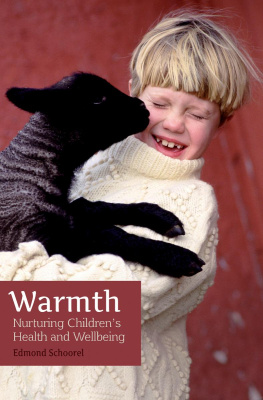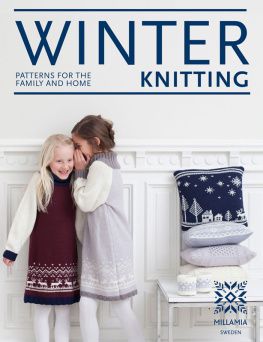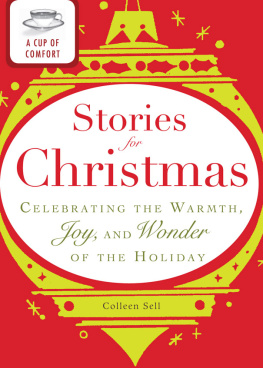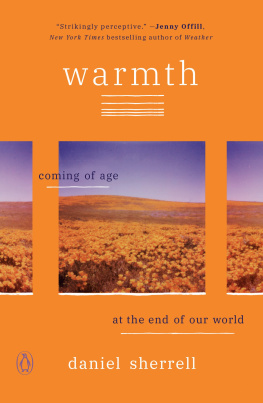When bringing up children, warmth is crucial. Parents who raise their children with warm, involved affection are showing them that they are interested in them, and curious about what will become of them. This kind of environment teaches children to treat themselves with warmth in turn, so that when they are confronted with the more difficult sides of their character, they react with the same forgiving kindness their parents have shown.
One of the most important aspects of raising children is to help them find their path in life. Naturally, there are also other important goals, such as being healthy and happy, earning a good income, developing talents and forming good relationships. However, these other factors all point towards the overall goal: that children can reach their potential, live a meaningful and fulfilling life, and do what they have come here to do. Put another way, parents hope that children will fully develop their selfhood, or sense of I.
This is why warmth is so important the I can only fully develop through warmth. We as parents have the ability to make it easier for the childs I to develop if we take care of that warmth. And why wouldnt we?
This book contains a mixture of anthroposophical theory, scientific research and case studies. I hope that, after having read it, you will think, Wow, I didnt know there was so much to warmth!
Warmth is a unique phenomenon. It permeates everything, it creates us, and it is the reason that the earth exists at all. Warmth is different to heat, the scorching blaze of the fire. If warmth no longer exists, cold remains. Then everything becomes quiet, life stops, there is no fun any more.
When we think of warmth, we might think of gathering round the fire at an inn after a beautiful, cold family walk at Christmas. A pleasant smokiness to the room, and a quiet, contented hush. The warmth of the fire makes us lazy, and hot chocolate with whipped cream makes us content and happy. Attention turns inward, and conversation slows to murmurs of agreement.
Or we might imagine feeling the suns rays for the first time after a long winter. We close our eyes and sense its delightful warmth, the light of spring glowing through our eyelids. New life announces itself all around us, and it wont be long until the trees, plants and shrubs blossom. All thanks to the sun.
We also might think of warmth as a warm bath after a busy day. The smell of lavender intensifies our feeling of contentment, of fullness. We can finally relax, careful not to fall asleep in the bath. Anything planned this evening? I dont think so. Wonderful.
Or we might picture a walk on the dunes on a rare summer day. The sand reflects the heat of the sun so that it feels as if the warmth is coming from everywhere. The fragrance of pine expands our thoughts, which have been made fuzzy by the sun. As our body works hard to lose its warmth, we perspire and taste salt on our lips. How wonderful when we finally reach the sea and the waves break over our toes. There is a breeze along the water and we notice the difference in temperature between the dry sand and the wet sea, cooling us down.
We all have our own unique ideas about warmth. I recommend that you try visualising your own, incorporating as many senses as you can into the details. In particular, smells can help us open the gates to a favourite memory, and funnily enough, it is warmth that helps to release those scents into the air. As you learn to visualise these different kinds of warmth, you may find they help you understand the explanations of warmth that follow in this book.
Just as these images have different moods, warmth has many different meanings. We may use the word literally (a warm bed) as well as metaphorically (a warm glance). In the next part of this book I will organise the different meanings of warmth into four categories. For this I will use the anthroposophical concept of fourfoldness. Dont worry if youre not familiar with the idea you dont have to know anything about fourfoldness to understand my discussion. Those who would like to know more about fourfoldness can refer to the recommended reading at the end of the book.
I am using fourfoldness as a structure for understanding how warmth affects different levels of childrens development. When children are growing up, they must first connect with their bodies before they can enter the world without fear or hesitation. First enter your body, then the world. We must then see warmth develop at every level the physical, the life forces, the soul and the I before children become adults who can pass their warmth on.
As I said in the Foreword, there is only one bridge that leads children to their path in life, the path on which they fulfil their purpose on earth. That bridge is warmth and it is so easy!
How to approach this book
There is no right or wrong way to read this book. From start to finish, it provides an introduction to warmth and what it means for child development. It will give you the tools and insight to apply this newly acquired knowledge to caring for your children.
The main (unboxed) text provides a continuous background and meaning behind the concept of warmth. The text in boxes gives extra context and interesting facts to accompany the subjects discussed in the text. You are welcome to pick and choose within these areas, or simply to flick to a chapter that interests you at that particular moment.
Fourfoldness
Fourfoldness
There have been many phases of the earths and humanitys development, but we can best describe them as having four levels.
The four levels of development are easiest to picture in an example from daily life: you have an idea, you make a plan, you decide on the conditions to execute the plan, and you execute it.
- The idea is the first level. It stirs your enthusiasm makes you start thinking about what you need to realise your idea.
- The second level is making a plan, during which you may encounter resistance.
- You make sure that the resistance will not stand in your way. This is the third level.
- Finally you land your idea, and act on it. This is the fourth level.
We can also find fourfoldness in the physical world. The earth, animals and human beings around us are not simply solid, liquid and gas like we learn at school. The four elements of earth, water, air and fire are not just coagulations of matter, but unique states which in varied quantities make up and define the characteristics of every living thing.
- Fire has impulsive qualities: beginning, renewing, driving, attracting. This corresponds to the ideas level above.
- Air stands for everything penetrable: providing space, expanse, lightness. This corresponds to the planning level.
- Water, in contrast, represents changeable qualities: adjusting, heaviness, creating a taut surface. This corresponds to the level of overcoming resistance.








